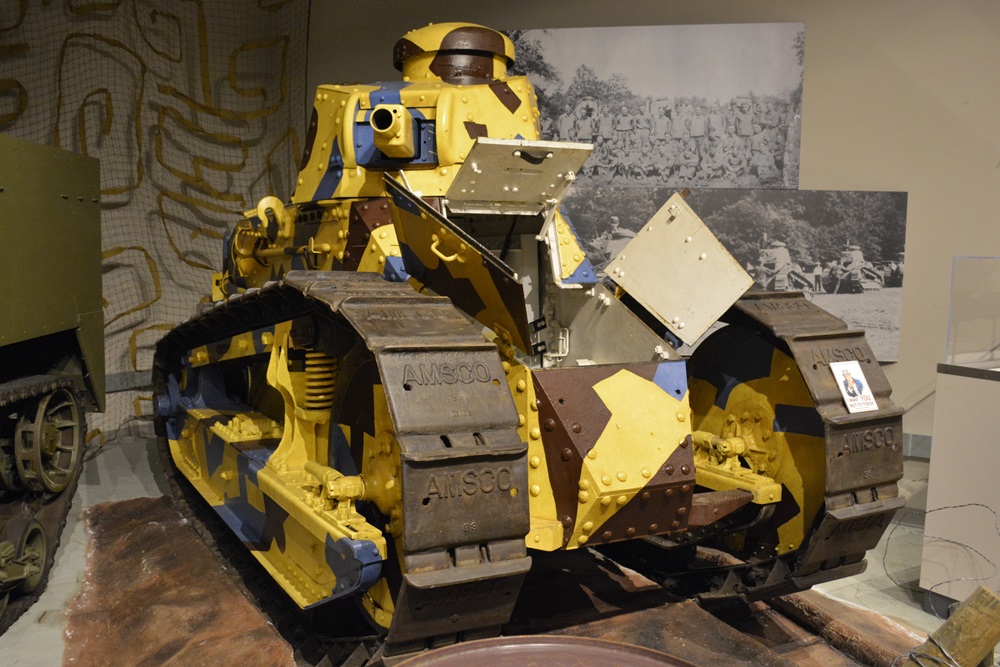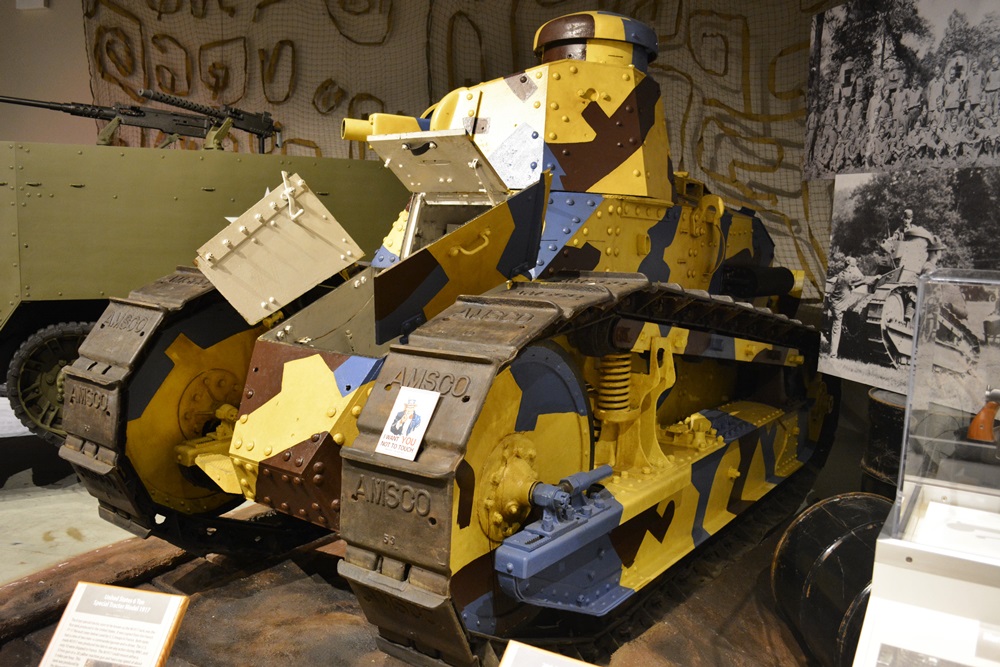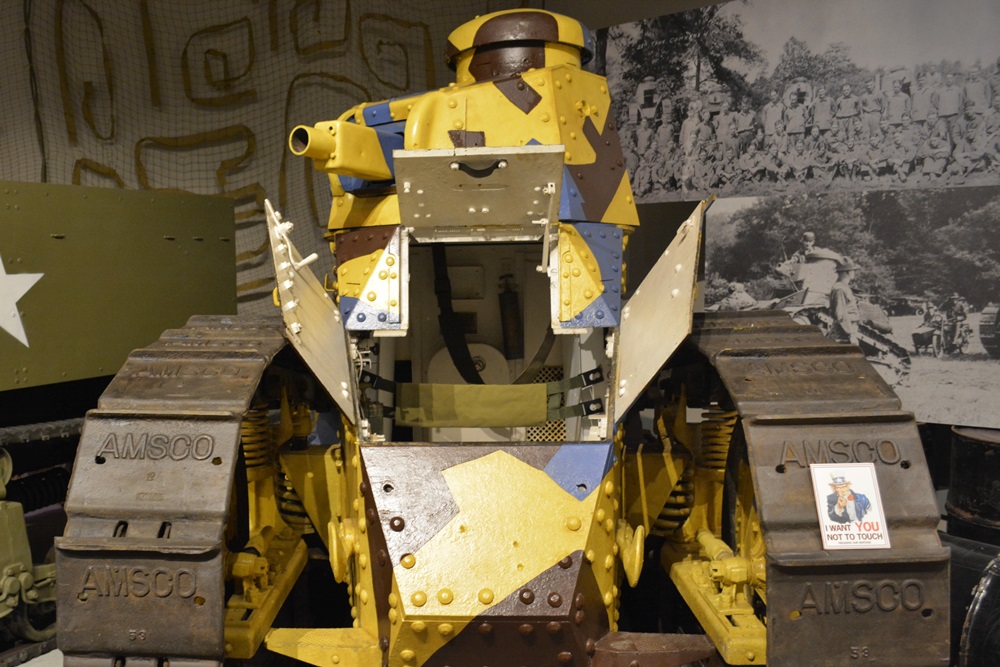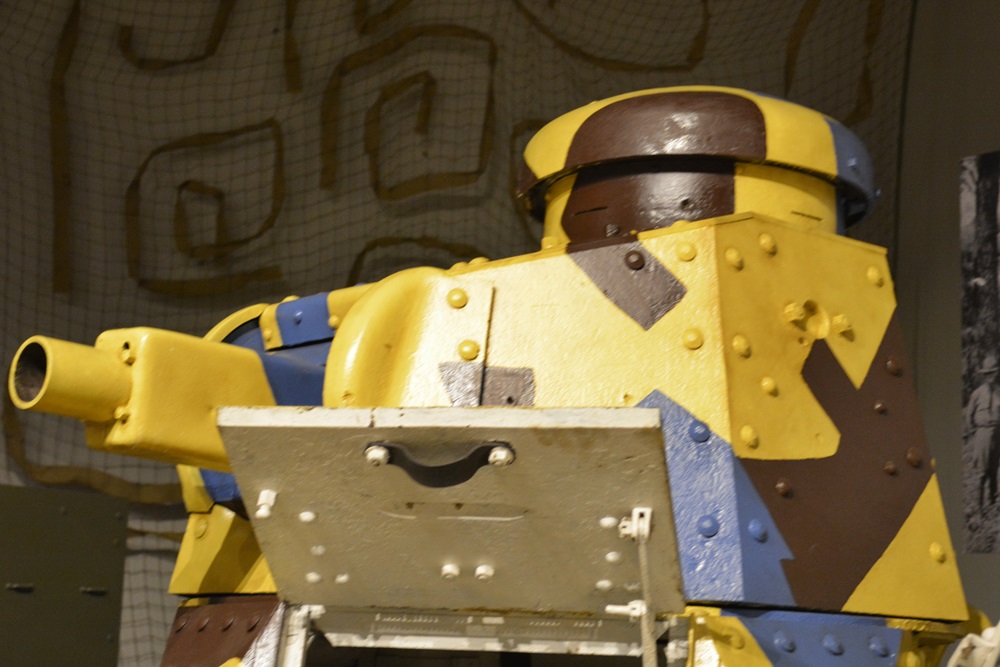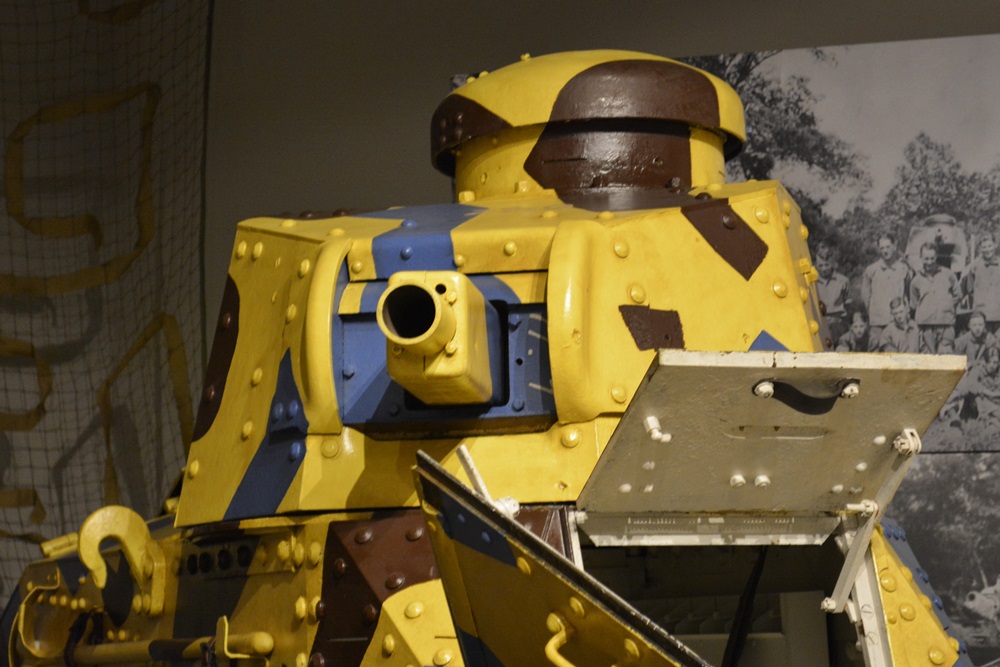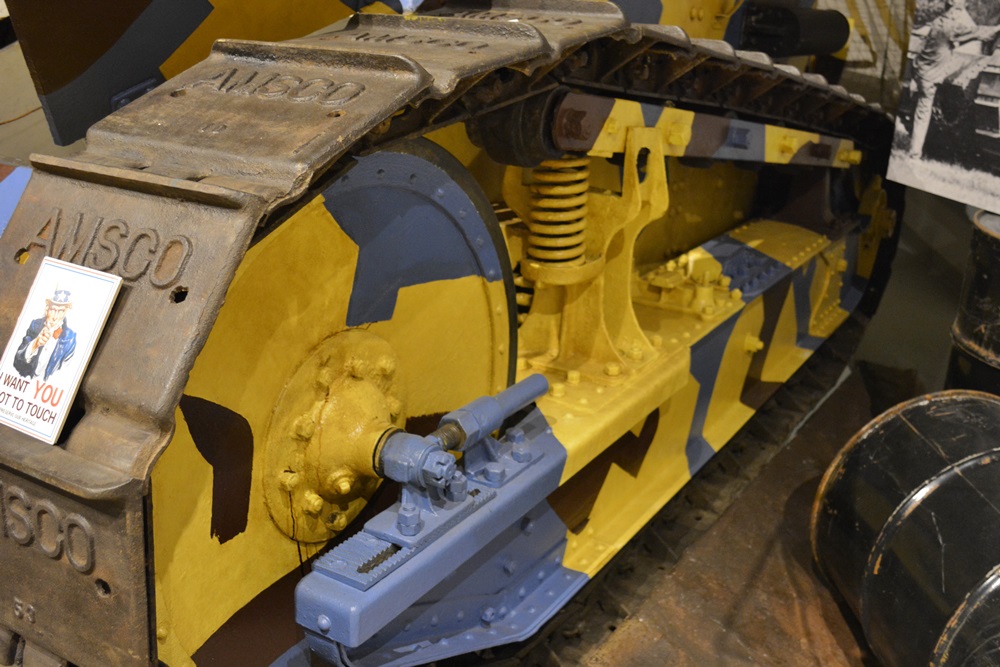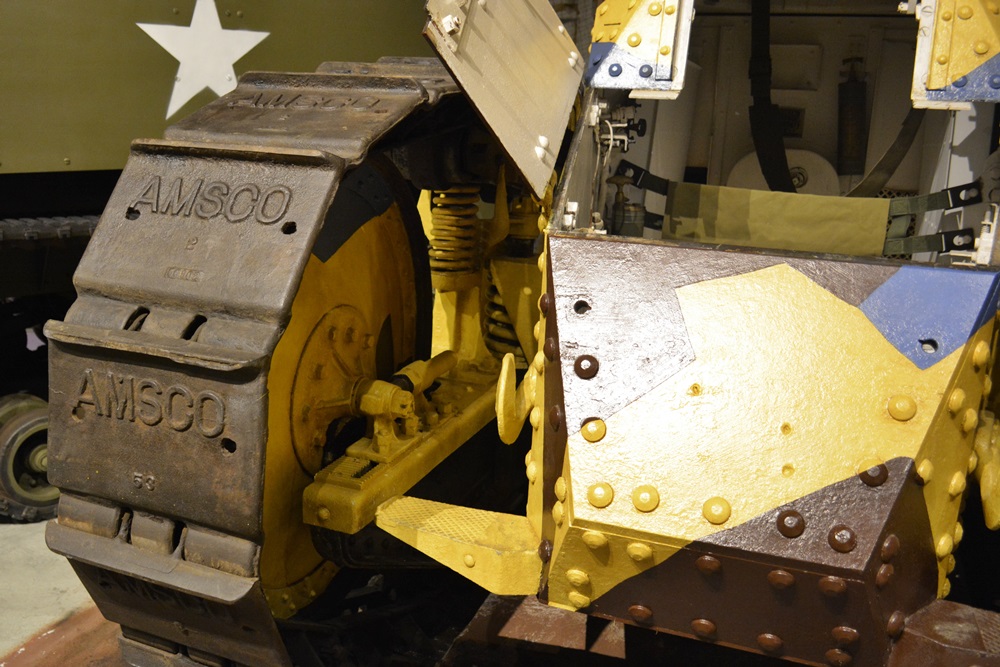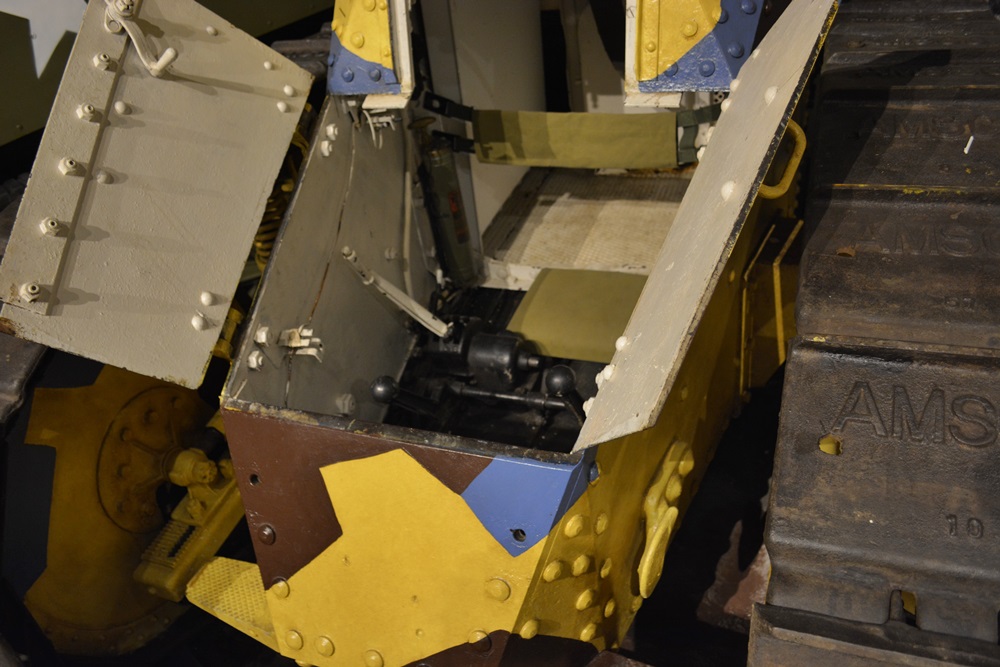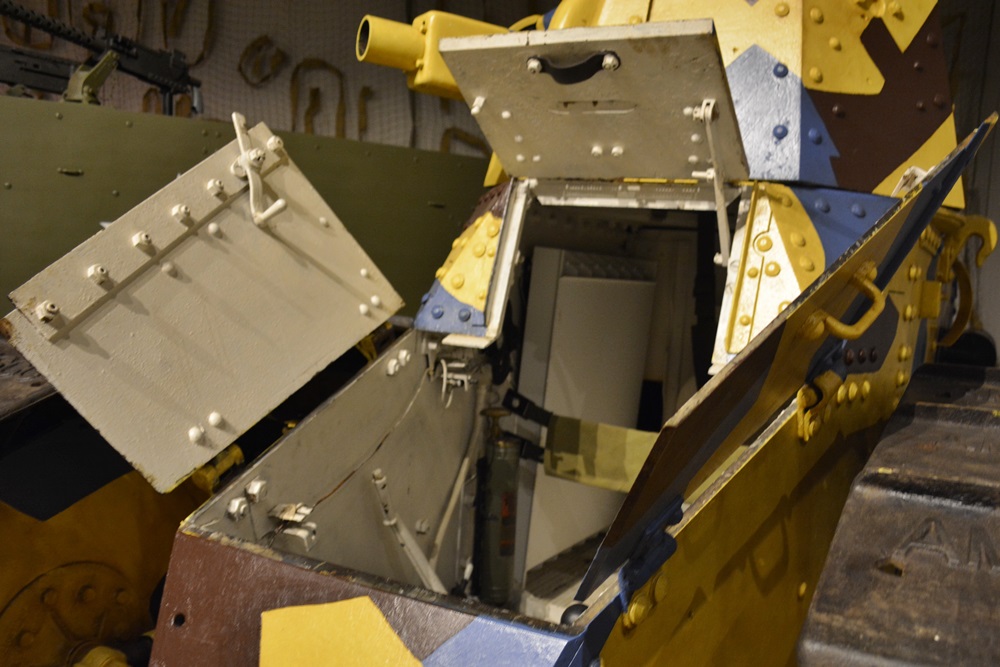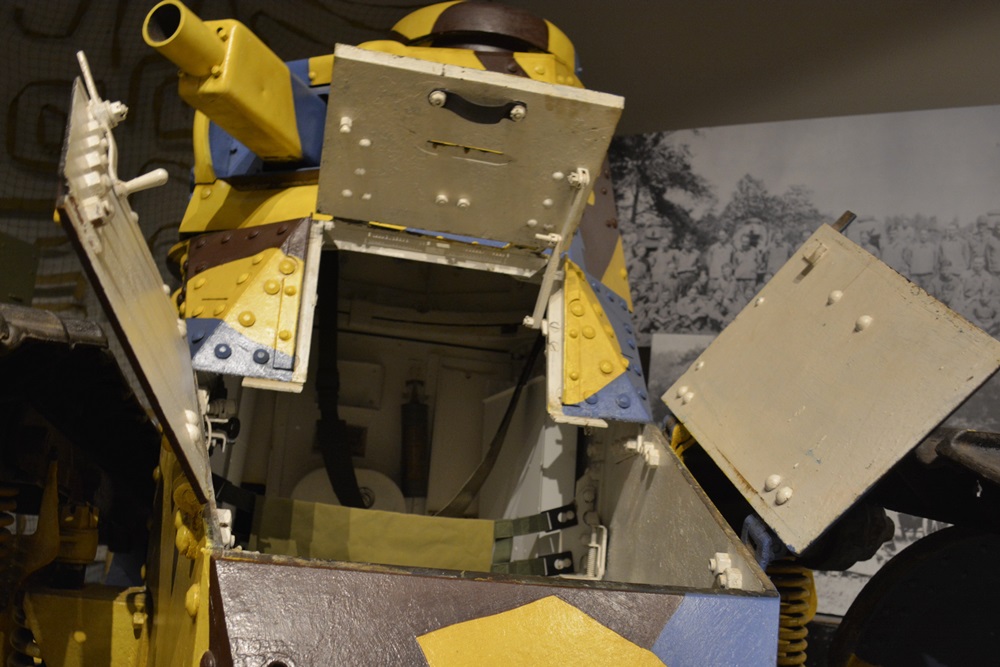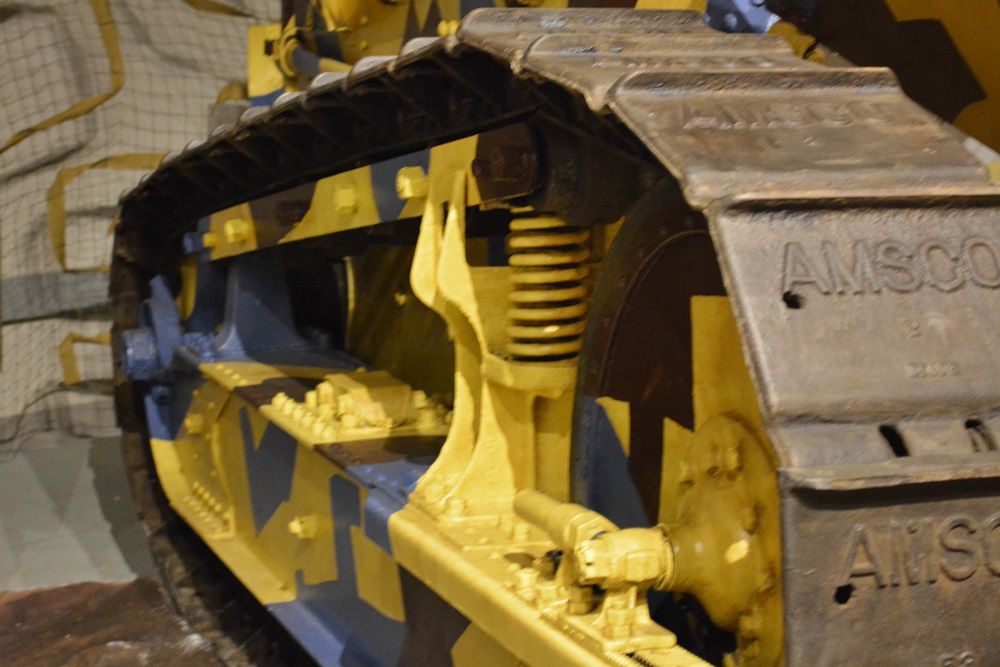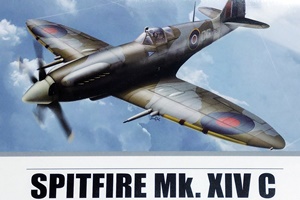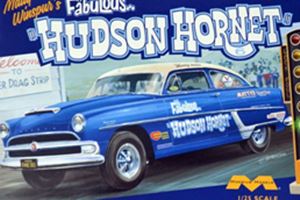Walk Around Photo Feature: United States 6 Ton Special Tractor Model 1917
This is an 12 photo set of a U.S. 1917 Tank
Photographed at the Pennsylvania Military Museum at Boalsburg, PA.
The 6 ton special tractor, soon to be known as the M1917 tank was the first tank produced in the United States. It was copied from the French FT-17 Renault that was used by U.S. troops in France. The U.S. made M1917 was produced too late to see any action during WWI and only 10 were shipped to France.
The M1917 could mount either a 37mm gun or a .30 caliber machine gun and had a top speed of about 5 miles per hour. This tank was produced by the Maxwell Motor Company in late February of 1919 and is the only remaining M1917 configured for the original .30 caliber Marlin tank machine gun.
The M1917 Tank was designed after the French Renault FT17 series. A total of 952 American-made M1917 tanks were produced for World War I. Of these 526 had turrets specifically designed for the .30 caliber Marlin machine gun. In 1919 the U.S. Army replaced the Marlin machine gun with the Browning .30 caliber machine gun.
The M1917 was modified from the French Renault FT17 series to accommodate American manufacturing processes. Changes included lowering the seat and extending the height of the armor around the driver's forward viewing hatch. This style of tank with a fully rotating gun turret, the driver in front, and the engine in the rear has influenced tank design into the 21st century.
A two man crew operated the M1917 six ton tractor asit was first called by the U.S. Army. The gunner sit in a sling seat within the turret space while the driver sat in the forward space were h used the two clutch-brake control levers to steer the tank.
Powered by a 42 horsepower, four-cylinder Buda HU engine the M1917 tank had forward high speed of 5.5 miles per hour on level roads. There were four forward and one reverse gear. A 30 gallon fuel capacity gave the vehilce a 30 mile cruising range on level roads. It was capable of going up a 70% grade, traversing an 84 inch wide trench, climbing a 36 inch obstacle, and fording a water depth of 24 inches. The removable tail peice assembly enabled the M1917 to cross trenchs or dugouts without flipping over.
Free Joomla Lightbox Gallery